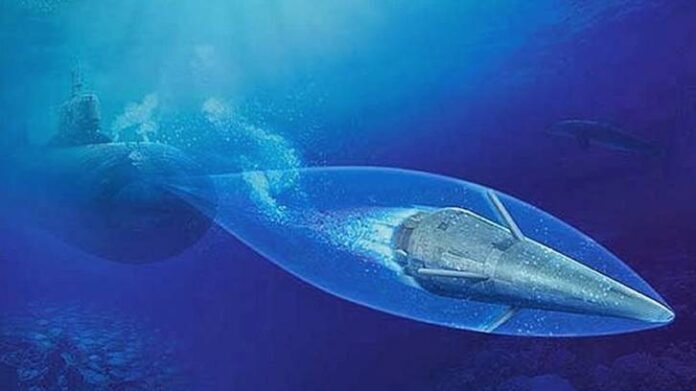Torpedo attack is the worst nightmare of a surface combatant. Because, while it is necessary to launch a dozen of guided missiles to neutralize a destroyer with air-defence capability, only one torpedo is enough to sink it aside. Especially if there is a risk of a torpedo against a high-value unit (HVU) protected by a task group, the planners will not be able to sleep until the danger is over. Therefore, navies always try to develop new technologies and tactics to avoid torpedo threat.
While torpedoes are quite dangerous for the warships, the development of supercavitating (SC) torpedo has taken torpedo countermeasures to a different level. After Russia developed “VA-111 Shkval” SC torpedo, Russian scientists stated that it is not possible to defend against it. Because the high-speed torpedo will enable submarines to attack enemy subs and surface ships without giving them time to respond. Iran developed a version of Russian SC torpedo and named as “Hoot” and Germany developed its indigenous SC torpedo named “Barracuda”. Although it is known that the U.S. tested a prototype, combat-ready versions are not expected to be used soon.
What is Supercavitation?
Supercavitation is the use of cavitation effects to create a bubble of gas or vapor large enough to encompass an object traveling through a liquid, greatly reducing the skin friction drag on the object and enabling high speeds.
A supercavitating object is a high-speed submerged object that is designed to initiate a cavitation bubble at its nose. The bubble extends past the aft end of the object and prevents contact between the sides of the object and the liquid. This separation substantially reduces the skin friction drag on the supercavitating object.

Applications of supercavitation include torpedoes and propellers only. Though in theory, the technique could be extended to an entire underwater vessel.
Supercavitating (SC) Torpedo:
During the Cold War, the Soviet Union relied heavily on the submarine fleet to neutralize U.S.’s superiority in naval forces. For this reason, it has intensified its efforts to develop an irresistible torpedo to pose a threat to the gigantic naval power of the USA and thereby achieve a balance. As a result of these efforts, the Soviet Union developed the SC torpedo, the Shkval (‘Squall’), which entered service in 1977. The manner makes it special was achieved by a specially designed flat nose cone, which deflects water outwards and initiates the supercavitaiton bubble. Fired from standard 533mm torpedo tubes at a conventional 50 knots, the Shkval’s solid-fuel rocket booster subsequently ignites and accelerates it to supercavitating speed (appx 200 kts), before a hydro jet sustainer kicks in to propel it on the final part of its way to the target.
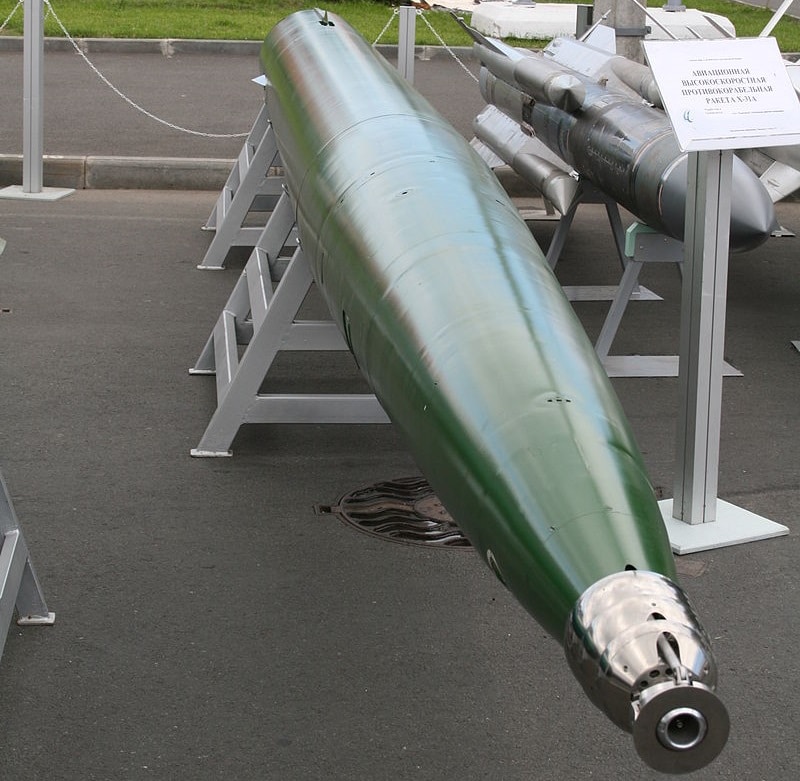
Technically, developing SC torpedo is pretty difficult. The controls of the torpedo must touch only the gas. At 230 mph, touching the water would shear parts off. Moreover, though it’s not easy to defend agains SC torpedos, there are some limitations;
– Controlling the torpedo is limited. Basic gentle turns would work, but no sharp turns.
– Thrusting and Cavitating at very high speed through water is energy inefficient. The Russian Shkval has a range of about 9 miles. Compared to modern conventional torpedoes, this is about 1/3 the range.
– With so much effort going into moving fast and control itself, SC torpedoes often carry a smaller warhead. They usually carry a warhead about 2/3 the size of conventional heavy-weight torpedoes.
– Firing off essentially a rocket underway is very noisy. Every ship with any sonar will hear and localize the source, this will let the target to take evasive actions, launch countermeasures. Moreover launcher submarine will be idantified and localized.
– Moving so fast, the SC torpedo is blind. It must simply travel its initial course, trusting its INS. But, since it is so fast, targets generally don’t get to move so far in its travel time. The SC torpedo can communicate to the launching platform via a thin wire trailing from the torpedo to the launching submarine. This can allow the submarine to guide the ‘blind’ torpedo to its target. If the wire would be broken, an uncontrolled torpedo in the water with speed more than 200 knots is a problem.
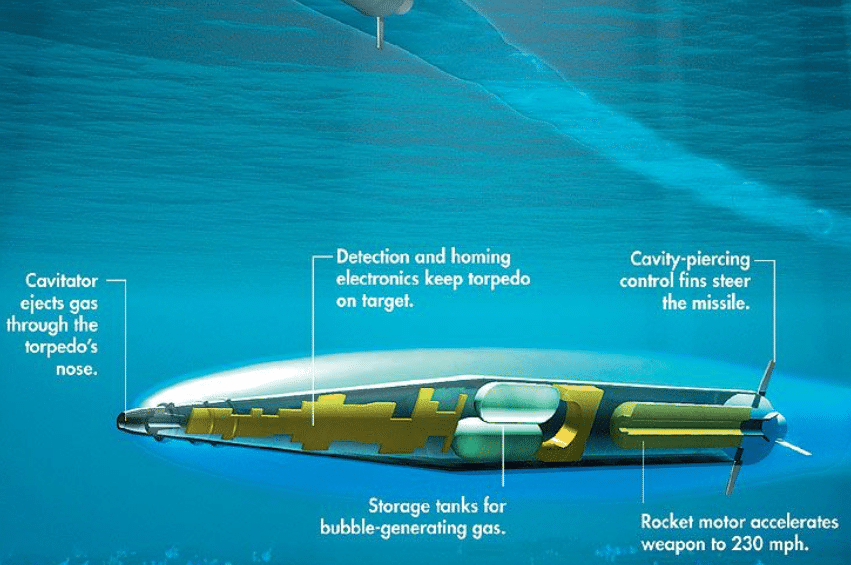
Should the navies be afraid of SC Torpedo?
First of all, there is not enough proof that they work efficiently. There is no real demonstrable guidance system for these supposed super-cavitating torpedoes. To say it simply, though combat-ready for about 35-40 years, SC torpedoes haven’t proved its capability in a real battle-scenario environment yet.
Though it’s very hard to defend against an SC torpedo, it’s not impossible. The best way to defend against SC torpedos, if possible, not to let the launcher submarine to enter Torpedo Danger Area of a task group or a single unit. Though hard to proceed, the task group should focus all effort with air, surface and underwater assets to keep the enemy sub out of the area.
A torpedo-attacked warship has a duration of about 2 minutes to take countermeasures and get out of the line of the torpedo. At 20 knots of speed, around 10 m-s, a destroyer could make a sharp turn and move up to 1.2km away from the strike site. The efficiency of the anti-torpedo decoys against SC torpedos is still unknown.
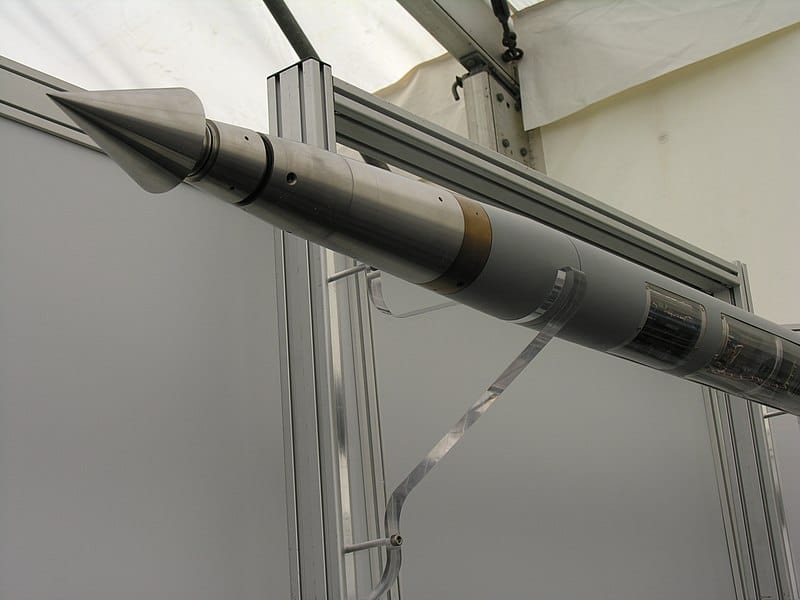
What are the new developments?
After the development of VA-111 Shkval, implementation of the supercavitation technology to underwater weapons kept the mind of the other countries (especially U.S.) busy. Although it is controversial how it developed, Iran has produced the Hoot SC torpedo (range: 6 nautical miles, speed 180 knots) and made a test-fire to a stable target on 2006 at Great-Prophet exercise. The Superkavitierender Unterwasserlaufkörper (lit. Supercavitating Underwater Running Body) (formerly known as Barracuda) was a development project of the German armaments company Diehl BGT Defense in cooperation with the German Navy. The supercavitating torpedo for the close-range defense of underwater targets was presented to the public in 2005 as a prototype, but it never went into development and procurement. As we mentioned above, the US efforts on this issue could not go beyond the prototype.
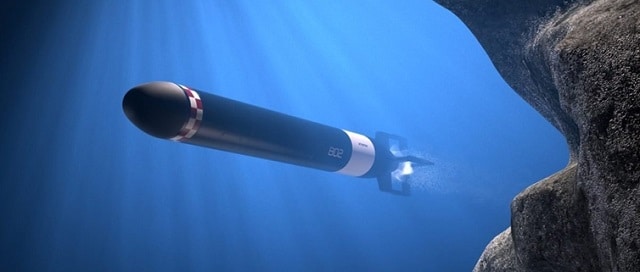
And what about the Russia? Did they stop after developing Shkval? Of course not. Russia has been developing a new SC torpedo named Khishchnik (“Predator”) which is possibly remedy the weakness sides of Shkval. On October 2016, Russian military analysts reported that a group of designers working for the Russian navy were completing work on a completely new high-speed torpedo which is intented ro replace Skhval. Unlike various supposed superweapons which they boast about publicly, the Russians are keeping very quiet about Predator because the project is classified. It is only known that it is being developed by the Elektropribor design bureau, which specializes in aviation technology. We are looking forward to see the new statements and demonstrations of Predator.


